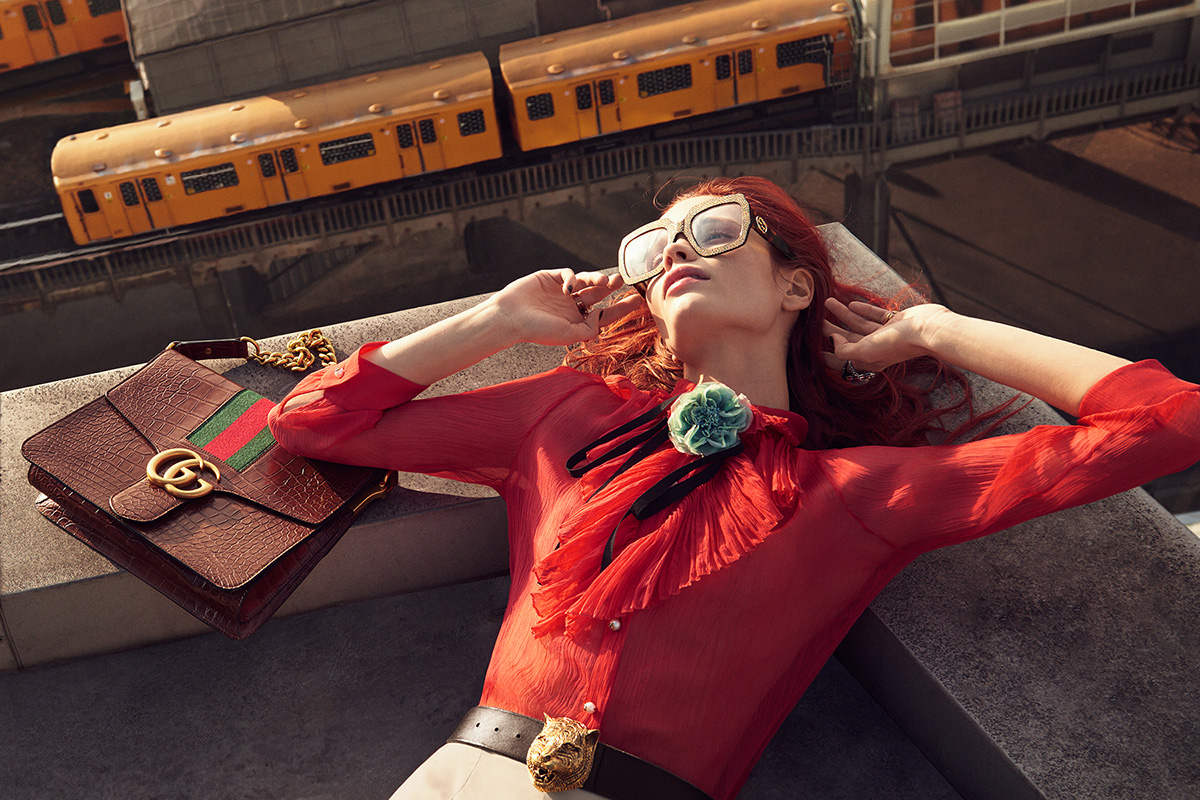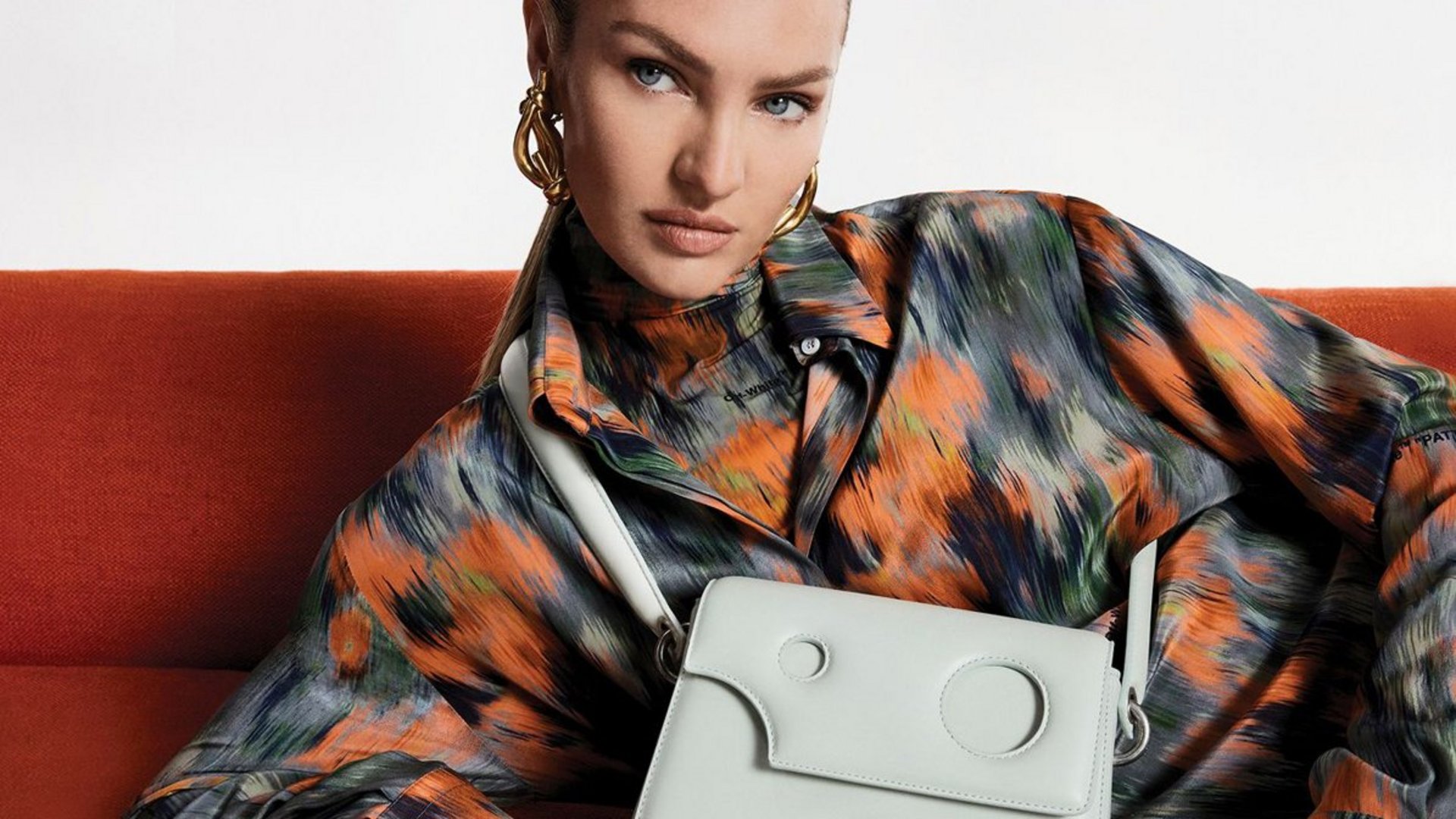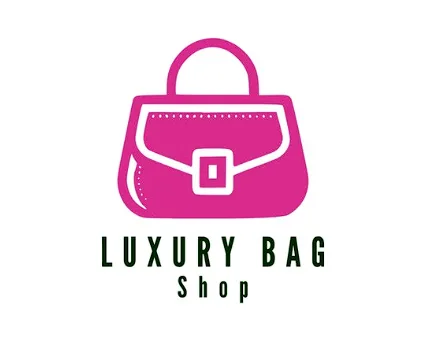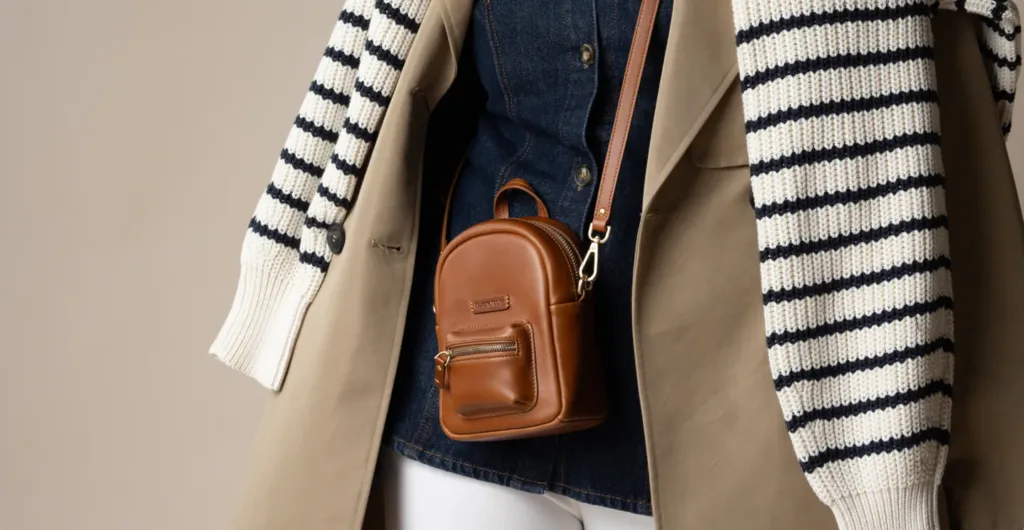News
Sustainable Luxury: How Eco-Friendly Fashion is Redefining Elegance
Part 1: The Roots and Rise of Sustainable Luxury in Fashion
Introduction – Why Sustainability Matters in Luxury Fashion
Fashion has always been more than just clothing or accessories; it has been a reflection of culture, identity, and aspiration. Luxury fashion in particular has long stood as a symbol of refinement, exclusivity, and elegance. Yet, as the world grapples with climate change, overconsumption, and social inequities, even the most prestigious houses are being called to rethink their practices.
The fashion industry is one of the most resource-intensive and polluting industries on the planet. From water-intensive cotton cultivation to chemical-heavy dyeing processes and global transportation chains, the impact is immense. According to the United Nations Environment Programme, the industry is responsible for nearly 10% of global carbon emissions and is the second-largest consumer of water.
Luxury fashion, ironically, is positioned both as part of the problem and as a potential solution. Because of its emphasis on quality, craftsmanship, and longevity, luxury already offers a model that contrasts with the wastefulness of fast fashion. However, the perception of excess—glamorous runways, exotic leathers, and air-freighted collections—has left luxury vulnerable to criticism.
This tension has birthed a new concept: sustainable luxury. It’s not just about reducing harm, but about redefining what elegance means in a modern, responsible world. For today’s consumers, especially Millennials and Gen Z, luxury must embody values of ethics, environmental stewardship, and authenticity. Elegance is no longer simply about aesthetics—it is about conscience.
The Evolution of Sustainability in Fashion
Sustainability in fashion did not start with luxury. The early 2000s saw a growing backlash against fast fashion brands that churned out cheap, disposable clothing at enormous environmental and social costs. Documentaries like The True Cost shed light on exploitative labor conditions and ecological devastation. Consumers began asking: Who made my clothes? What’s the impact of my purchase?
In response, smaller eco-conscious brands emerged, pioneering organic fabrics, fair-trade practices, and transparent supply chains. Yet, luxury brands were initially slower to adopt sustainability narratives. Many assumed that because luxury already emphasized durability and craftsmanship, it was inherently sustainable compared to fast fashion.
But the cultural tide shifted. The definition of “luxury” could no longer be separated from values. Around the 2010s, luxury houses began to experiment with eco-friendly initiatives. Gucci’s parent company Kering introduced environmental profit-and-loss accounting. Stella McCartney, long a pioneer in sustainable fashion, proved that luxury could thrive without animal leather or fur.
As consumers became more vocal, luxury houses realized that sustainability was not a trend but a mandate. By the early 2020s, nearly every major luxury brand had announced carbon reduction goals, introduced sustainable collections, or pledged to move toward circular business models. What started as a defensive strategy evolved into a new era of eco-luxury.
Materials that Redefine Luxury
At the heart of sustainable fashion is the reimagining of materials. Luxury fashion, with its reputation for fine fabrics and exotic skins, faces the challenge—and opportunity—of redefining what counts as “luxurious.”
-
Vegan Leathers: Traditional leather production has significant environmental costs, from methane emissions in cattle farming to toxic tanning processes. Innovators are turning to alternatives such as mushroom mycelium leather, apple peel leather, and cactus leather. These materials not only reduce animal harm but also offer unique textures and aesthetics. Companies like MycoWorks (mushroom-based) and Desserto (cactus-based) are gaining traction in luxury collaborations.
-
Organic and Regenerative Textiles: Organic cotton eliminates harmful pesticides, while regenerative agriculture practices restore soil health and capture carbon. Hemp and bamboo are being embraced for their fast growth and minimal resource needs.
-
Recycled and Upcycled Materials: Prada’s Re-Nylon collection transforms ocean plastics into luxury bags. Stella McCartney uses recycled polyester and sustainable viscose. These innovations highlight how waste can become beauty.
-
Sustainable Metals and Embellishments: Jewelry and handbag hardware are also under scrutiny. Ethical gold and recycled metals ensure that accessories align with sustainable values.
The adoption of these materials marks a profound cultural shift. Once, luxury equated rarity and expense; today, luxury increasingly equates responsibility and innovation.

The Role of Craftsmanship and Longevity
One of the strongest arguments for luxury as sustainable fashion lies in its emphasis on longevity. A Chanel handbag or a Hermès Birkin is designed to last decades, often becoming heirlooms. Unlike fast fashion, where garments fall apart within a season, luxury’s durability reduces waste.
Artisanship is key. Handcrafted goods use time-honored techniques that not only produce higher quality but also preserve cultural traditions. In Italy, France, and Japan, artisan workshops ensure that skills are passed down generations. Supporting this model helps resist the disposability culture that dominates mass fashion.
Moreover, repairability is gaining importance. Brands like Hermès and Gucci now highlight repair services, encouraging customers to cherish and maintain their pieces instead of discarding them. This “buy less, choose well, make it last” philosophy aligns luxury with sustainability.
Luxury houses are learning to tell this story more explicitly: that choosing one meticulously crafted bag, designed to endure, is more sustainable than cycling through dozens of cheaper alternatives.
Cultural Shift – From Status to Responsibility
Perhaps the most profound transformation is cultural. Luxury was once defined by exclusivity, price, and status. To carry a Louis Vuitton monogram or a Birkin was to signify wealth and social standing. But modern consumers—especially younger generations—are rewriting these codes.
-
Millennials and Gen Z: These groups are projected to make up over half of all luxury consumers in the coming years. They are values-driven, environmentally conscious, and vocal. For them, luxury is not just about what you own, but about what your choices say about the world.
-
Social Media Activism: Platforms like Instagram and TikTok amplify awareness. Hashtags like #SustainableFashion and #WhoMadeMyClothes push brands toward transparency. A brand caught greenwashing can face backlash within hours.
-
Luxury as Storytelling: A handbag made of cactus leather is no longer just a bag—it’s a story of innovation and responsibility. A diamond mined ethically or created in a lab becomes a symbol of progress. Today, responsibility is the new exclusivity.
This shift does not mean that traditional luxury values—beauty, craftsmanship, aspiration—are obsolete. Rather, it means that true elegance now requires an ethical dimension. The modern definition of elegance combines aesthetics with conscience, style with sustainability.
Conclusion of Part 1
The story of sustainable luxury is, at its core, the story of fashion adapting to cultural, environmental, and generational change. From the early days of eco-fashion pioneers to the present wave of luxury houses embracing new materials and practices, we see an evolution not just in products but in philosophy.
Luxury is no longer just about rarity or excess. It is about responsibility, longevity, and values. It is about aligning elegance with care—for people, for the planet, and for heritage.
As Part 1 shows, the rise of sustainable luxury has deep roots in both necessity and aspiration. In Part 2, we will explore how innovation, circular business models, and visionary brands are shaping the future of eco-friendly elegance—and why sustainability will define the next era of luxury fashion.
Part 2: The Future of Eco-Friendly Elegance
Introduction – A New Era of Luxury
As explored in Part 1, the roots of sustainable luxury lie in a combination of necessity and cultural transformation. Yet, if the first chapter of this story was about redefining materials, values, and consumer expectations, the second chapter is about looking forward: how innovation, circular business models, and changing cultural dynamics are shaping the future.
Luxury has always thrived on anticipation. Consumers look to luxury houses not just for timeless classics, but also for vision—what is next, what is possible, what is extraordinary. The coming decades will demand that luxury goes beyond incremental improvements and boldly embraces sustainability as central to its DNA. This future is not a compromise; it is an opportunity to expand the very definition of elegance.
In this section, we will explore the trends, technologies, and philosophies that will guide eco-friendly luxury into the next era.
1. Circular Economy in Luxury Fashion
A cornerstone of the future of sustainable fashion is the concept of the circular economy—a system designed to eliminate waste and keep resources in use for as long as possible. Instead of the traditional linear model (“take, make, dispose”), the circular model emphasizes designing for durability, repair, reuse, and recycling.
-
Resale and Secondhand Luxury: Once considered taboo, secondhand shopping is now booming. Platforms like The RealReal and Vestiaire Collective have normalized pre-owned luxury, especially for younger buyers. Not only does resale extend product lifecycles, but it also makes luxury more accessible, fueling cultural relevance. Luxury houses are now participating directly—Gucci, Burberry, and Valentino have launched partnerships with resale platforms.
-
Rental Models: Renting designer fashion for special occasions has also gained traction. Services like Rent the Runway demonstrated the appetite for temporary ownership. Luxury brands are cautiously exploring rental to reach sustainability-conscious customers without diluting exclusivity.
-
Take-Back and Recycling Programs: Some brands are beginning to reclaim their own products at end-of-life. Prada’s Re-Nylon is an example of upcycling waste materials. Stella McCartney has piloted circular textiles where garments can be disassembled and remade. The ultimate goal is closed-loop luxury—where nothing goes to waste.
Circularity is more than a business model; it’s a cultural reframing. Luxury pieces are no longer just individual purchases but part of a cycle of care, ownership, and renewal.
2. Technological Innovation – Merging Craft with Science
Technology is one of the most exciting frontiers in sustainable luxury. Traditionally, luxury has been about craft, heritage, and artistry. Yet in the future, the combination of science and craft will create new definitions of refinement.
-
Biofabrication: Lab-grown leathers, silks, and even diamonds are becoming commercially viable. These materials mimic natural ones but are created without the environmental toll. Modern Meadow produces biofabricated leather; Bolt Threads has developed Mylo, a mycelium-based material already used by Stella McCartney and Lululemon.
-
Blockchain for Transparency: One of the biggest challenges in sustainable fashion is verifying claims. Blockchain technology allows every step of a product’s journey to be tracked—from raw material sourcing to final sale. Consumers can scan a QR code and see a garment’s full history. Luxury houses like LVMH are experimenting with Aura, a blockchain consortium for transparency.
-
AI and Supply Chain Efficiency: Artificial intelligence helps forecast demand, reducing overproduction—a chronic problem in fashion. Luxury brands can use AI to tailor production more closely to actual needs, minimizing waste.
-
3D Printing and Customization: 3D printing can produce intricate designs with minimal material waste. Customization, powered by digital technologies, ensures products are made-to-order, reducing unsold inventory.
Far from undermining tradition, these innovations elevate luxury by combining artistry with innovation, heritage with cutting-edge science.
3. Cultural Shifts in Consumer Behavior
The future of eco-luxury will also be shaped by how consumers think and behave. The younger generations—Millennials and Gen Z—are not just passive buyers; they are cultural influencers who demand accountability.
-
From Ownership to Access: Younger consumers value experiences as much as possessions. Renting, reselling, and sharing platforms appeal to their lifestyle. Luxury brands must adapt to a world where owning fewer but better items is seen as aspirational.
-
Sustainability as Status: In the past, status came from price tags and logos. In the future, the status symbol may be having a product that is carbon-neutral, vegan, or circular. A handbag made of mushroom leather could carry more cultural weight than an exotic skin bag.
-
Social Media Amplification: With TikTok and Instagram shaping trends overnight, luxury must remain vigilant. A single misstep—whether environmental negligence or greenwashing—can damage reputation quickly. Conversely, a bold sustainability move can go viral and cement cultural relevance.
This shift positions consumers not just as buyers, but as partners in co-creating the definition of sustainable luxury.

4. The Role of Emerging Markets
While sustainability has been heavily driven by Western consumers, the future of luxury will increasingly involve emerging markets, particularly in Asia, Africa, and Latin America.
-
China and Sustainability: Chinese consumers are among the most important for luxury growth. Traditionally focused on status, younger Chinese buyers are now more eco-conscious, influenced by both government policies and global cultural trends. Luxury brands must integrate sustainability into their strategies for this market.
-
India’s Artisanal Heritage: India has vast traditions of craftsmanship in textiles, embroidery, and jewelry. Sustainable luxury can thrive by preserving and uplifting these crafts, aligning luxury’s global appeal with local authenticity.
-
African Innovation: Africa is emerging as a hub for circular fashion innovation, from recycled textiles to community-driven fashion enterprises. For luxury brands, collaborating with African designers and artisans opens new narratives of sustainable elegance.
These markets prove that sustainability is not a Western-only conversation; it is becoming global, with local expressions of eco-luxury.
5. The New Definition of Elegance
At its heart, luxury has always been about defining elegance. But as society evolves, so too must elegance. The future of sustainable luxury will be defined by values as much as by aesthetics.
-
Elegance as Responsibility: To be elegant is to care—not just for one’s own appearance, but for the world and people around us. This philosophy resonates deeply with the next generation.
-
Elegance as Storytelling: Every luxury product tells a story. In the future, the most desirable stories will be those of innovation, ethics, and impact. A dress woven from regenerative cotton or a ring crafted from lab-grown diamonds is not only beautiful but meaningful.
-
Elegance as Longevity: Elegance is not fleeting. A sustainable luxury product endures in style, quality, and cultural significance. Heirlooms of the future will be those that carried both beauty and conscience.
This redefinition of elegance ensures that sustainability is not an afterthought but central to the luxury experience.
6. Challenges and Criticisms
While the future is promising, it is not without challenges.
-
Greenwashing: Many brands have been accused of overstating their eco-friendly credentials. Authenticity is key; transparency and third-party verification are crucial.
-
Cost and Accessibility: Sustainable innovations are expensive, which may raise prices further. Luxury must balance exclusivity with inclusivity to avoid alienating new generations.
-
Balancing Tradition and Innovation: Heritage is central to luxury identity. Some consumers resist drastic changes (e.g., vegan leathers replacing exotic skins). Brands must innovate while respecting tradition.
These challenges highlight that the path to sustainable luxury is complex, requiring creativity, integrity, and long-term vision.
Conclusion – The Future is Conscious Elegance
The future of eco-friendly luxury is not just about greener materials or efficient supply chains. It is about a fundamental cultural transformation. Luxury, once synonymous with opulence and exclusivity, is becoming synonymous with responsibility, transparency, and values.
Technology will merge with craftsmanship. Circularity will reshape ownership. Emerging markets will bring new stories and traditions into the global luxury narrative. Most importantly, consumers themselves will hold luxury accountable, ensuring that sustainability is not optional but essential.
Elegance in the future will mean more than beauty. It will mean conscience, care, and contribution. The luxury houses that thrive will be those that embrace this new definition fully, showing that true sophistication lies not in excess, but in responsibility.
The coming era belongs to conscious elegance—where the highest form of luxury is the ability to enjoy beauty without harm, to celebrate artistry without exploitation, and to leave behind not waste but legacy.
Part 3: Beyond Fashion – The Broader Impact of Sustainable Luxury
Introduction – Why This Conversation Matters
Luxury fashion has always been more than just clothing or accessories. It reflects aspirations, mirrors cultural values, and often sets the tone for wider industries. When luxury shifts its identity, the ripple effect reaches beyond runways and boutiques—it touches manufacturing, media, consumer psychology, and even geopolitics.
The rise of sustainable luxury is not merely a trend in fashion; it is a cultural signal. It suggests that the most powerful symbol of success is no longer excess, but responsibility. In this final section, we’ll explore how sustainable luxury is influencing society, inspiring industries beyond fashion, and shaping the cultural imagination of elegance in the 21st century.
1. Sustainability as a Global Cultural Currency
In the past, luxury was defined by exclusivity, rarity, and craftsmanship. Today, another dimension is added: responsibility as a form of prestige. Owning a bag made of cactus leather or a watch powered by solar energy is not just about aesthetics—it communicates values.
This shift means that sustainability itself becomes a status symbol. Just as logos once signaled wealth, eco-friendly choices now signal education, ethics, and awareness. In many elite circles, displaying sustainable luxury is as much about cultural capital as financial capital.
2. Cross-Industry Inspiration
Fashion is not alone. Other industries are following luxury’s lead:
-
Automotive: Electric luxury cars like Tesla, Porsche Taycan, and Bentley’s EV commitments show that sustainability can align with performance and prestige.
-
Hospitality: Eco-resorts and carbon-neutral hotels are redefining luxury travel as immersive, responsible experiences.
-
Jewelry and Watches: Lab-grown diamonds and recycled metals are becoming mainstream even in high-end collections from Cartier and Tiffany & Co.
Luxury fashion’s embrace of sustainability acts as a catalyst. It proves that innovation and responsibility can enhance, not diminish, the aura of exclusivity.

3. A Platform for Storytelling and Education
Luxury houses are cultural storytellers. When they showcase sustainability in campaigns, runways, and flagship stores, they do more than sell products—they educate consumers.
For example, when Stella McCartney promotes mushroom leather, she is also explaining the environmental damage of animal-based leathers. When Gucci launches “Off the Grid,” it highlights the potential of recycled nylon. In this way, luxury brands become platforms for awareness, blending aspiration with activism.
This educational role matters because luxury has visibility. What happens on the runway often trickles down into mainstream culture. Sustainable luxury, then, is not just an elite movement but a cultural narrative that eventually influences mass fashion.
4. The Emotional Power of Legacy
Luxury goods often become heirlooms, passed from one generation to another. In the context of sustainability, this idea of legacy gains new weight.
When a sustainable handbag or garment is inherited, it tells a dual story: of personal family history and of a cultural moment when fashion began to align with ethics. The object is not only beautiful but symbolic of a broader shift in values.
This emotional dimension may be the most powerful aspect of sustainable luxury: it creates meaning that outlasts trends, connecting the personal with the planetary.
5. The Road Ahead – Challenges and Opportunities
The movement is still young, and challenges remain:
-
Authenticity vs. Greenwashing: Brands must go beyond marketing claims and prove their practices. Transparency will be the test of survival.
-
Scalability: True sustainability requires innovation in supply chains, which is costly and complex.
-
Balancing Tradition with Change: Consumers love heritage. Luxury must innovate without erasing its own identity.
Yet each challenge is also an opportunity. The most forward-thinking brands will not just adapt, but lead the cultural conversation.
6. Conclusion – Conscious Elegance as the Future of Luxury
Sustainable luxury is not about sacrificing beauty for responsibility; it is about realizing that the two can coexist—and indeed, that they must.
In the 21st century, elegance is no longer measured solely in silk linings or rare leathers. It is measured in care for people, respect for nature, and the courage to innovate responsibly. Luxury becomes not just a marker of wealth, but a symbol of cultural maturity.
The handbags, shoes, dresses, and jewels of tomorrow will carry more than style. They will carry stories of forests preserved, artisans empowered, emissions reduced, and traditions reimagined. To wear sustainable luxury will be to participate in a global narrative of progress and consciousness.
In this sense, the future of elegance is conscious elegance—a refinement that is not only seen but felt, not only admired but respected, not only enjoyed but shared across generations.
Luxury has always promised something extraordinary. Today, the most extraordinary promise it can make is this: that beauty will no longer come at the expense of the world, but in harmony with it.

